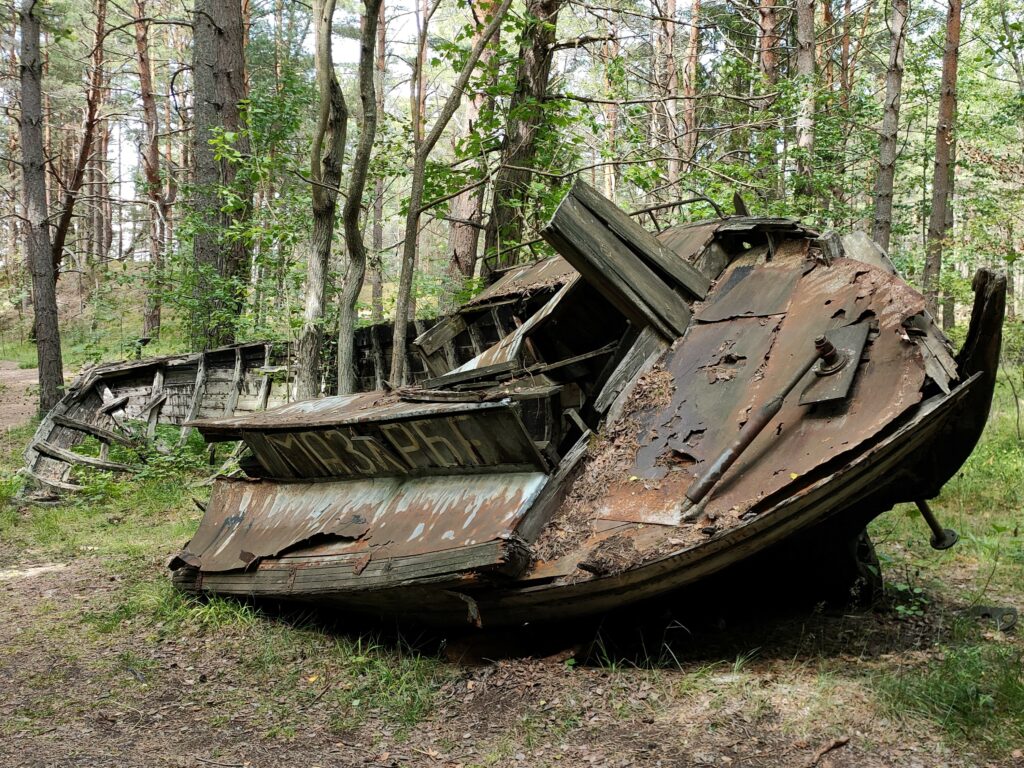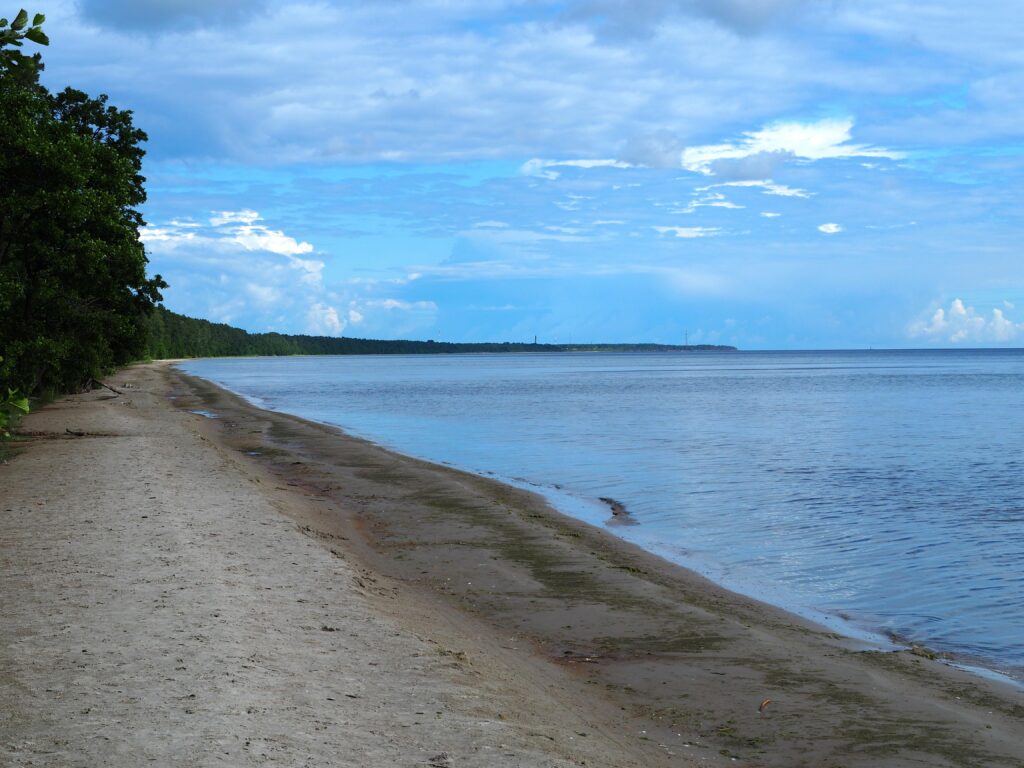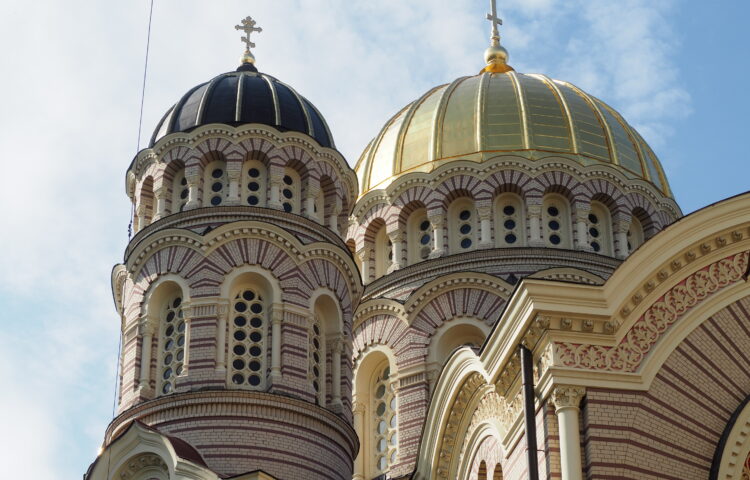With under 2 million citizens and an area of 65 thousand km2, Latvia is one of the smallest countries in Europe, albeit quite varied in terms of landscapes and ethnicity. If you are wondering what to do in Latvia you will not be short on options: from its vibrant capital to cute small cities and villages and plenty of national parks combining forests, beaches and other wonders as well as castles from medieval and modern times.
We spent two weeks in the Baltics visiting Estonia, Latvia and Lithuania with a side visit to the city Helsinki. We combined moving by bus between the main cities with renting a car, either for one or several days at a time. Some of the recommended visits you will find in this publication cannot be done without a car. If you rent one, you can use it to move freely in the three countries.

In this post, you will find a very thorough list of visits in the main cities and natural areas, including all the places we assessed and the ones we did visit. Also, if you want some additional help on how to organise your trip besides what to do in Latvia, do check my other post ‘Baltic countries roadtrip: two-weeks itinerary to the capitals and nature‘. There you will find a brief explanation on what you will encounter, ways to organise your trip or how to move around.
You can also check my posts about what to do in Estonia and Lithuania:
Contents
Riga
The capital of Latvia, Riga, was founded in 1201 by the Germans in Livonian territory. It is noted for its Art Nouveau/Jugendstil architecture, which is a common tour to take in the city.
Riga is the most populated city in the Baltic states, which also has the busiest airport in the area. It is quite popular for bachelor parties.

My honest recommendation would be to start the visit to the city with a general free walking tour. The guide will tell you about the history of the country and the city and will walk you through the main monuments in the old town.
The most interesting visits in Riga
- Town Hall: it was the single place that most suffered the destruction from WWII. However, it was rebuilt in its original form (a requiring being Riga a UNESCO World Heritage Site).
- House of the Blackheads: located in the Town Hall and therefore rebuilt. The building is spectacularly beautiful. As a curiosity, apparently the most important milestone of the Blackheads was to put the first Christmas tree in Europe. However, Tallinn does not agree with that and a very diplomatic historian established a while ago that while Tallinn’s tree was in fact put a couple of years earlier, it was not decorated while Riga’s one was.

- St Peters church: appart from visiting the church, be sure to check the statue of Breme Musicians at the back. It consists on four animals on top of one another, and touching their head brings luck. The higher the head the more luck you get, so jump high!
- The Peitav-Shul synagogue.
- Three Brothers: three houses with very similar facades. The houses are connected in the interior.

- Swedish gate.
- Powder Tower.
- House of the Parliament.
- Large Guild and small Guild.
- House of the Cat.
- St Jacobs Cathedral.
- Līvu square.
- Dome Cathedral: it currently has a huge square up front although this area used to be filled with buildings. However, around 1930 the dictator that ruled in the country demolished them so that he could deliver his speeches from the balcony with a decent amount of public.
- Riga’s Central Market.
The cat: a symbol of Riga
History tells that around 1900, a latvian rich man wanted to be admitted to the guild but still only german citizens could be part of it. He decided to buy the building in front of the guild and place a black cat (which is considered bad luck) pooping in the direction of the guild. Now, this house is known as House of the Cat. In return, the guild reported him for infamies. The result of the trial was that the rich man had to move the direction of the cat (now it is pooping opposite of the building of the guild), while the guild could not be restricted only to german citizens. This piece of history has turned the cat into a symbol of the city.

Other things to do in Riga
There are other interesting tours or visits that you can take, such as the one regarding Art Nouveau or the Soviet Riga free tour, where you’ll get to know how was life in the city under the soviet ocupation, and also get away from Old Riga to explore Central Riga.
Second to taking those free walking tours, the best thing you can do is wander through its streets and get lost in its history. Riga is a trully captivating city.

Gauja National Park
Established in 1973, the Gauja National Park is the largest and oldest in Latvia. It has great biological diversity, variety of landforms, natural springs, sandstone outcrops, picturesque views and unique natural, cultural and historical monuments. We explored it by visiting some of the most renowned castles and attractions in the area: Sigulda, Krimulda and Turaida, Gutmanis Cave and Cēsis Castle. If you do all of them in one day, it will be a very complete and long one!
The route of the three castles: Sigulda, Krimulda and Turaida
A 9,3km moderate hiking route that includes a cable car ride, and a very complete what to do in Latvia. You can complete the hike in about 3 hours, however you should plan all day to allow time for the visits to the castles. It includes the two castles at Sigulda, the one over the hill of Krimulda and lastly, Turaida. You can also plan these same visits by car if you are short on time, which is what we did.

Sigulda
In Sigulda you can find not one but two castles that can be visited in one or two hours (it depends on if you take or not the audioguide for the new castle).
The new castle, which was built in the 1800s as a home that has been changing hands. I absolutely loved it. It has several floors, the first one being the most spectacular with every room built in a particular way. The tower is occupied by the staircase with colourful glass windows, and once at the top you have very decent views of the area, including the sight of the nearby castle of Turaida. Legend tells that a ghost used to live in the castle.

The medieval castle was built in 1207 as a fortress of the Livonian Order in Sigulda. It is in ruins with only some walls and a tower remaining. In the summer time these grounds are used for concerts and festivals, which would have been spectacular to see.

Krimulda
Located at the top of the hill and accessible either by climbing some stairs or by cable car. Keep in mind that the hike up to Krimulda is quite difficult and demanding. We skipped that part of the visit, so this is second-hand information.
If you want a little more excitement, you can also bungee jump from the cable car.
Once in Krimulda, you will have a bird’s eye over the valley and the river. The 14th century ruins of the castle are in very bad shape.
Turaida
The most impressive of all the castles in Gauja National Park. It is a red fortress mostly in ruins but with a lot of still-standing rooms with several exhibitions, including the tower. The visit to the castle is quite extensive.
Moreover, the visit can include the Turaida Estate, a relatively large area. It features how life was in these type of estates in the 17th and 18th century. The visit includes living houses, smithy, bath-house (sauna), fish cellar and fish farm, among others.

Gutmanis cave
One of the most popular caves in the National Park, Gutmanala is the most spacious grotto. It is located near Krimulda and it is mostly famous for its role in the legend of the Rose of Turaida and for the millions of inscriptions and graffiti in its walls. Although some of them may be centuries old, it is quite difficult to establish as they have been writen over and over.
The legend of the Rose of Turaida tells that a girl named Rose, the most beautiful in the village, used to meet her lover, a gardener from the castle of Turaida, in Gutmanis cave. However, a soldier that was obsessed with her and wanted to marry her, one day tricked Rose with a note to meet him in the cave, making her believe that the note was from her lover.
When she arrived and realised the soldier pretended to kidnap and marry her, Rose convinced him to let her go in exchange of her magic scarf. She told the soldier that as long as he was wearing it, no harm could come to him. To prove that, she encouraged the soldier to swing his sword to her neck. When he reluctantly did, he killed her. Of course, the story about the magic scarf was a lie, she just rather die than marry the soldier.
Cēsis Castle
Built 800 years ago, Cēsis castle is one of the best preserved and more spectacular and visited castles in Latvia. It is quite large and you can access the whole area of the castle and sometimes there are family activities organised, for example learning how to use a bow.

For us, the most fun and original part was the visit to the tower. It is completely dark and you light the way with antique oil lanterns. At the top of the tower there is a very cool projection of the history of the castle with augmented reality.

However, pregnant me was so exhausted after the whole day of castle-sightseeing that once I had seen the basics I sat on some stairs and let my husband explore on his own.
Liepāja
The third city in size of Latvia and a great sea destination througout the 19th and 20th century. It is known throughout the country as the “City where the wind is born“.
Liepāja is not particularly big or with a large and famous old town, however, due to the cleverness of the city council it is an essential visit on the list of what to do in Latvia. And why is that?
The touristic spots of interest have been arranged in an easy walking tour called “Liepaja – follow the notes!”. The spots of most historical, cultural or architectonical value of the city center have been organised in a map marked with musical notes (do, re, mi…). In the streets of Liepāja, the route is marked with physical musical notes in the cobblestone. The result is like a scavenger hunt where you chase the staff while discovering the city.

Some of the spots you will visit are The Square of Roses, Peter’s Garden, The Concert hall “Great Amber” or the Holy Trinity Cathedral (this one has the world’s largest unaltered mechanical organ). The route can be completed in about two hours. There are two options, the basic route has 3.5km. Then, you can add an additional loop of 2.6 extra km. It was such a cute activity and we enjoyed it way more than expected!

Kuldiga
A traditional village in the south-west of Latvia with about 10,000 inhabitants. Kuldiga is quite popular amongst local visitors but not so much for international ones.
The old town around the river is the only remaining 17th–18th-century ensemble of this kind in the Baltic states. In September 2023 it was declared a UNESCO World Heritage Site.
We enjoyed the peaceful walk around the old town more than we expected. Although we didn’t have a specific route to follow. Kuldiga is a cute place, not crowded with tourists but with life in its streets. Be sure to visit the Old Town Hall and Town Hall Square, the Catholic Church of the Holy Trinity or walk around Kuldiga Town Garden. Also, Liepāja street has several white metal structures featuring musical instruments and cats that listen to the concert, which is definitely worth seeing.

The village is also known for having the widest waterfall in all Europe, Venta rapid. It is the next item on this list.
Venta rapid
With a width of 100-110 meters, Venta waterfall is the widest one in the continent of Europe. The maximum height is however about 2 meters. Overall, it is not the most impressive waterfall you will see in your live.
The red-brick bridge across the Venta river was included in the UNESCO World Heritage list in September 2023. It is located 200 m downstream from the waterfall.

In spring and autumn, as the fish come up the river to breed, they jump to clear the rapid and continue upstream. I’m sure this is really cool to see!

Slītere National Park
Slītere is the smallest national park in Latvia but also the most varied one. It encompasses landscapes of beach and dunes, broadleaf forests, bogs, wetlands, boreal forests, swamps or wooden houses. As it is not easy to visit without a car, the tourism is mostly local. However, I do encourage you to rent one and visit: where else would you see a ships graveyard?
In the park, you will find several nature trails or cycling paths of varying level of difficulty, routes for motorists and boaters or observation towers to discover the biodiversity and cultural history.
Around Mazirbe
- Slitere lighthouse: second oldest in Latvia, with its lantern at 102 meters over sea level. You can climb to the top for the most spectacular views in the park.

- Slitere Nature Path: a hike of 1.5 kilometers that starts with 150 steps down and ends with those 150 steps up. Once at sea level, you walk through wooden platforms over the swamp. It is crowded with vegetation and mushrooms. And mosquitoes. Few times in my life have I seen that many mosquitoes. So my advice would be to wear long sleeves and trousers and apply mosquito repellent.

- The town of Mazirbe: it is probably the best spot to have lunch, as the rest of the park is pretty remote.
- Mazirbe’s graveyard: old cementery that we visited with grey sky and creepy vibes. The antique crosses guarding every tomb, planted along a hill, are quite a sight. Also, legend says that the only official (as in recognised by the goverment) tomb of a wherewolf is placed there.

- Mazirbe’s beach: quite popular among locals. There was a decent amount of people sunbathing.

- Soviet ships graveyard: truly one of the most curious places we visited. After a very short hike through a forest, you arrive to an open space where you can see wooden cracked ships from the soviet era. There is only a few of them but it is totally worth a visit.

Around Kosrags
- The town of Kosrags: cute traditional wooden houses, although inhabited and therefore you cannot visit them. You can see them from the car and check the signs at the front doors.
- Ragu muzejs Valde: it is a museum of deer antlers that is placed in the house of a local. Apparently, his father started picking up the antlers he found in the surroundings and he continued with the task. It has nothing to do with hunting. Although you will not find it writen anywhere, when you finish the visit you’ll need to pay 5€ per person to the host.
- Cape Kolka: the horn where waters of the Sea Inlet (Gulf of Riga) and the Great Sea (Baltic Sea) meet. You’ll need to pay 2€ per hour for the parking. In Cape Kolka some livonian festivities are celebrated, although we didn’t catch one.
- Kolka Pine Path: short trail that combines the classic baltic pine forests and beaches. There is an observation tower very close to the parking lot with decent views and a strong wind at the top.

- The town of Kolka with its three churches: catholic, orthodox and lutheran.

- Evazi Nature Path: 15m cliffs over the sea, the highest in the country. The beach is white, long and peaceful and on good days you can see the Estonian island of Saarema. It is very easy to arrive from the car.

Was this post useful for you? Please let me know and feel free to ask any question in the comments section! You can also support my work and Buy Me A Coffe. I will be immensely happy 🙂
